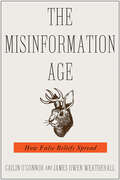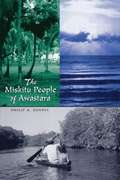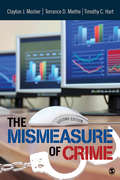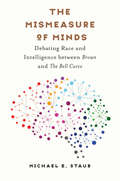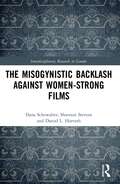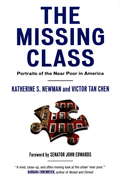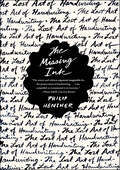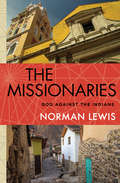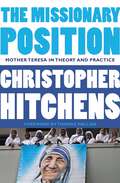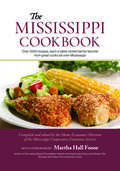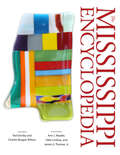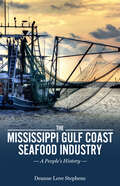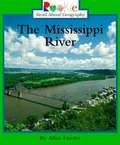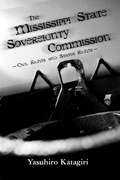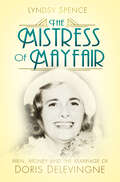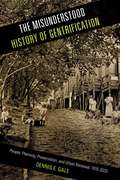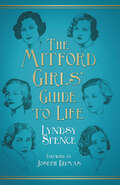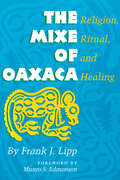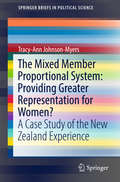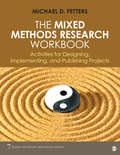- Table View
- List View
The Misinformation Age: How False Beliefs Spread
by James Owen Weatherall Cailin O'Connor“Empowering and thoroughly researched, this book offers useful contemporary analysis and possible solutions to one of the greatest threats to democracy.” —Kirkus ReviewsEditors’ choice, The New York Times Book ReviewRecommended reading, Scientific AmericanWhy should we care about having true beliefs? And why do demonstrably false beliefs persist and spread despite bad, even fatal, consequences for the people who hold them?Philosophers of science Cailin O’Connor and James Weatherall argue that social factors, rather than individual psychology, are what’s essential to understanding the spread and persistence of false beliefs. It might seem that there’s an obvious reason that true beliefs matter: false beliefs will hurt you. But if that’s right, then why is it (apparently) irrelevant to many people whether they believe true things or not?The Misinformation Age, written for a political era riven by “fake news,” “alternative facts,” and disputes over the validity of everything from climate change to the size of inauguration crowds, shows convincingly that what you believe depends on who you know. If social forces explain the persistence of false belief, we must understand how those forces work in order to fight misinformation effectively.“[The authors] deftly apply sociological models to examine how misinformation spreads among people and how scientific results get misrepresented in the public sphere.” —Andrea Gawrylewski, Scientific American“A notable new volume . . . The Misinformation Age explains systematically how facts are determined and changed—whether it is concerning the effects of vaccination on children or the Russian attack on the integrity of the electoral process.” —Roger I. Abrams, New York Journal of Books
The Miskitu People of Awastara
by Philip A. Dennis"Most anthropologists who have lived among other people . . . feel a periodic need to go back," writes Philip A. Dennis in the introduction to this book. "Fieldwork gives you a stake in the people themselves, a set of relationships that last the rest of your life . . . and when the time is right, it is important to go back. " Dennis first journeyed to Awastara, a village on the northeastern coast of Nicaragua, during 1978-1979 as a postdoctoral student. He had come to study a culture-bound syndrome in which young women are possessed by devils. In the process, he became fascinated by other aspects of Miskitu culture-turtle fishing, Miskitu Christianity, community development efforts-the whole pattern of Miskitu community life. He also formed deep friendships to carry into the future. Twenty years later he was able to return and continue his ethnographic work. Utilizing ideas from recent interpretive anthropology and a vivid writing style, Dennis describes food habits, language, health practices, religious beliefs, and storytelling, inviting the reader to experience life in Awastara along with him. Building upon earlier work by Mary Helms, Bernard Nietschmann, Edmund Gordon, and Charles Hale, The Miskitu People of Awastara makes its own original contribution. It is the first full-length study of a coastal Miskitu community north of Puerto Cabezas, contrasting life before and after the war years of the 1980s. It will be a valuable addition to the literature on this indigenous group and should appeal to anthropologists and other social scientists, as well as all readers interested in peoples of the Caribbean coast.
The Mismeasure of Crime
by Terance D. Miethe Dr Clayton Mosher Timothy C. HartFilled with real world examples derived from media reports on crime trends and other sources, this fully updated Second Edition analyzes the specific errors that can occur in the three most common methods used to report crime—official crime data, self report, and victimization studies. For each method, the authors examine strengths and weaknesses, the fundamental issues surrounding accuracy, and the method's application to theoretical and policy research. Throughout the book, the authors demonstrate the factors that underlie crime data and illustrate the fundamental links between theory, policy, and data measurement.
The Mismeasure of Minds: Debating Race and Intelligence between Brown and The Bell Curve (Studies in Social Medicine)
by Michael E. StaubThe 1954 Brown v. Board of Education decision required desegregation of America's schools, but it also set in motion an agonizing multidecade debate over race, class, and IQ. In this innovative book, Michael E. Staub investigates neuropsychological studies published between Brown and the controversial 1994 book The Bell Curve. In doing so, he illuminates how we came to view race and intelligence today.In tracing how research and experiments around such concepts as learned helplessness, deferred gratification, hyperactivity, and emotional intelligence migrated into popular culture and government policy, Staub reveals long-standing and widespread dissatisfaction—not least among middle-class whites—with the metric of IQ. He also documents the devastating consequences—above all for disadvantaged children of color—as efforts to undo discrimination and create enriched learning environments were recurrently repudiated and defunded. By connecting psychology, race, and public policy in a single narrative, Staub charts the paradoxes that have emerged and that continue to structure investigations of racism even into the era of contemporary neuroscientific research.
The Mismeasure of Woman
by Carol TavrisTavris unmasks the widespread but invisible custom of treating men as the normal standard, and women as the abnormal. The real differences lie not in gender, but in power, resources, and life experiences.
The Misogynistic Backlash Against Women-Strong Films (Interdisciplinary Research in Gender)
by Dana Schowalter Shannon Stevens Daniel L. HorvathThis book is an exploration of the political struggle for visibility engendered by the growing number of women-centered popular films and a critical analysis of the intensifying misogynistic backlash that have accompanied such advances in the depiction of women on screen. The book draws from a variety of theoretical and methodological tools to provide critical cultural analysis and alternative readings of women-strong films and their important role in society. The authors engage with popular culture and the popular press, media studies, and rhetorical criticism examining new modes of communication while providing historical context to help make sense of these oppositional readings. The book includes case studies on Mad Max: Fury Road, Wonder Woman, Atomic Blonde, Star Wars, and Ghostbusters to analyze critical responses, men’s-rights activist boycotting campaigns, online harassment, and the political economy that precede and accompany the creation and presentation of these films. This is an accessible and timely analysis of the rise of feminist-friendly and women-led films and the inevitable counterculture of misogyny. It is suitable for students and researchers in Media and Communication Studies, Gender and Media, and Cultural Studies.
The Missing Class
by Katherine Newman Victor Tan ChenFifty-seven million Americans-including 21 percent of the nation's children-live a notch above the poverty line, and yet the challenges they face are largely ignored. While government programs assist the poor, and politicians woo the more fortunate, the "Missing Class" is largely invisible and left to fend for itself. Missing Class parents often work at a breakneck pace to preserve the progress they have made and are but one divorce or unexpected hospitalization away from sliding into poverty. Children face an even more perilous and uncertain future because their parents have so little time to help them with their schoolwork or guide them during their adolescent years. With little supervision, the younger generation often flounders in school, sometimes falling prey to the same problems that are prevalent in the much poorer communities that border Missing Class neighborhoods. Paradoxically, the very efforts that enabled parents to get ahead financially often inhibit their children from advancing; they are in real danger of losing what little ground their parents have gained.The Missing Class is an urgent and timely exploration that describes-through the experiences of nine families-the unique problems faced by this growing class of people who are neither working poor nor middle class. Katherine Newman and Victor Tan Chen trace where these families came from, how they've struggled to make a decent living, and why they're stuck without a safety net. An eloquent argument for the need to think about inequality in a broader way, The Missing Class has much to tell us about whether the American dream still exists for those who are sacrificing daily to achieve it.From the Hardcover edition.
The Missing Ink: The Lost Art of Handwriting
by Philip HensherWhen Philip Hensher realized that he didn't know what a close friend's handwriting looked like ("bold or crabbed, sloping or upright, italic or rounded, elegant or slapdash"), he felt that something essential was missing from their friendship. It dawned on him that having abandoned pen and paper for keyboards, we have lost one of the ways by which we come to recognize and know another person. People have written by hand for thousands of years— how, Hensher wondered, have they learned this skill, and what part has it played in their lives? The Missing Ink tells the story of this endangered art. Hensher introduces us to the nineteenth-century handwriting evangelists who traveled across America to convert the masses to the moral worth of copperplate script; he examines the role handwriting plays in the novels of Charles Dickens; he investigates the claims made by the practitioners of graphology that penmanship can reveal personality.But this is also a celebration of the physical act of writing: the treasured fountain pens, chewable ballpoints, and personal embellishments that we stand to lose. Hensher pays tribute to the warmth and personality of the handwritten love note, postcards sent home, and daily diary entries. With the teaching of handwriting now required in only five states and many expert typists barely able to hold a pen, the future of handwriting is in jeopardy. Or is it? Hugely entertaining, witty, and thought-provoking, The Missing Ink will inspire readers to pick up a pen and write.
The Missionaries: God Against the Indians
by Norman LewisThe renowned travel writer delivers &“a scathing account of how some missionary sects deal with indigenous peoples in their bid for the conquest of souls&” (Library Journal). Acclaimed travel essayist Norman Lewis spent his life traversing the globe and offering thoughtful commentary on the cultures he visited. In The Missionaries, he turns his critical lens on those missionaries who embed themselves in indigenous cultures to convert the locals to Christianity. What begins with the well-meaning goal of improving the lives of native people, though, often has the opposite effect. Focusing mainly on tribes in South America, but also in Indochina and the Pacific Islands, Lewis demonstrates how various missionary organizations betray their originating principals and—whether knowingly or not—contribute to the destruction of entire cultures on a scale equivalent to that of genocide.
The Missionary Position: Mother Teresa in Theory and Practice
by Thomas Mallon Christopher Hitchens"A religious fundamentalist, a political operative, a primitive sermonizer, and an accomplice of worldly secular powers. Her mission has always been of this kind. The irony is that she has never been able to induce anybody to believe her. It is past time that she was duly honored and taken at her word."Among his many books, perhaps none have sparked more outrage than THE MISSIONARY POSITION, Christopher Hitchens's meticulous study of the life and deeds of Mother Teresa. A Nobel Peace Prize recipient beatified by the Catholic Church in 2003, Mother Teresa of Calcutta was celebrated by heads of state and adored by millions for her work on behalf of the poor. In his measured critique, Hitchens asks only that Mother Teresa's reputation be judged by her actions-not the other way around.With characteristic élan and rhetorical dexterity, Hitchens eviscerates the fawning cult of Teresa, recasting the Albanian missionary as a spurious, despotic, and megalomaniacal operative of the wealthy who long opposed measures to end poverty, and fraternized, for financial gain, with tyrants and white-collar criminals throughout the world.
The Mississippi Chinese: Between Black and White
by James W. LoewenThis scholarly, carefully researched book studies one of the most overlooked minority groups in America—the Chinese of the Mississippi Delta. During Reconstruction, white plantation owners imported Chinese sharecroppers in the hope of replacing their black laborers. In the beginning they were classed with blacks. But the Chinese soon moved into the towns and became almost without exception, owners of small groceries. Loewen details their astounding transition from “black” to essentially white status with an insight seldom found in studies of race relationships in the Deep South.
The Mississippi Cookbook
by Home Economics Division Mississippi Cooperative Extension ServiceThe Mississippi Cookbook was prepared to collect, make available, and preserve the favorite recipes of fine cooks throughout Mississippi. More than fifty years ago, over 7,000 recipes were collected from all areas of the state. From this total, the home economists of the Mississippi Cooperative Extension Service had the painfully difficult task of screening the amount down to the 1,200 best recipes.The names of the individuals who submitted follow each recipe and, in some cases, historical data about the dish is included. A special section includes favorite recipes of the wives of former governors. The appendices feature tables and charts that provide such valuable technical information as substitutions and equivalents, measuring ingredients, time and temperature guides, definitions, and servings.Featuring a foreword from renowned chef and storyteller Martha Hall Foose, this comprehensive collection of Mississippi's most popular recipes records the state's culinary heritage and its mastery of home cooking.
The Mississippi Encyclopedia
by Ted Ownby and Charles Reagan WilsonRecipient of the 2018 Special Achievement Award from the Mississippi Institute of Arts and Letters and Recipient of a 2018 Heritage Award for Education from the Mississippi Heritage TrustThe perfect book for every Mississippian who cares about the state, this is a mammoth collaboration in which thirty subject editors suggested topics, over seven hundred scholars wrote entries, and countless individuals made suggestions. The volume will appeal to anyone who wants to know more about Mississippi and the people who call it home. The book will be especially helpful to students, teachers, and scholars researching, writing about, or otherwise discovering the state, past and present.The volume contains entries on every county, every governor, and numerous musicians, writers, artists, and activists. Each entry provides an authoritative but accessible introduction to the topic discussed. The Mississippi Encyclopedia also features long essays on agriculture, archaeology, the civil rights movement, the Civil War, drama, education, the environment, ethnicity, fiction, folklife, foodways, geography, industry and industrial workers, law, medicine, music, myths and representations, Native Americans, nonfiction, poetry, politics and government, the press, religion, social and economic history, sports, and visual art. It includes solid, clear information in a single volume, offering with clarity and scholarship a breadth of topics unavailable anywhere else. This book also includes many surprises readers can only find by browsing.
The Mississippi Gulf Coast Seafood Industry: A People's History (America's Third Coast Series)
by Deanne Love StephensThe seafood industry on the coast of Mississippi has attracted waves of immigrants and other workers—oftentimes folks who were either already acquainted with maritime livelihoods or those who quickly adapted to the resources of the region. For generations the industry has provided employment and sustenance to Coast peoples. Deanne Love Stephens tells their stories and identifies key populations who have worked this harvest. Oyster and shrimp processing were the most significant of these trades, and much of the Gulf Coast's history follows these two delicacies. Harvesting, processing, and marketing oyster and shrimp products built the Mississippi seafood industry and powered the growth of the entire coastal region. This book is the first to offer a broad view of the many ethnic groups and distinct populations who toiled in the oyster and shrimp industries. Relying heavily upon contemporary newspapers, oral histories, and interviews to create a rich picture of the industry and its workers, the author presents the history of laboring people who daily toiled in factories and often went unheard and unrecognized. Stephens provides an overview of significant early developments and the beginnings of the industry, considering the development of railroad expansion, lighthouse construction, and ice technology. She covers significant state and federal legislation that both defined and protected marine resources, illustrating the depth of the industry’s importance as Mississippians wrestled with adequate protective measures to preserve oyster and shrimp resources throughout the nineteenth and twentieth centuries.
The Mississippi River (Rookie Read-about Geography Series)
by Allan FowlerFollow the Mississippi River from its source near Canada to the Gulf of Mexico and discusses its history, towns, and physical features. <P><P> Emergent readers (Ages 6-7) can expand their horizons and take off on adventures to cities, nations, waterways, and habitats around the world or right in their own backyard through this easy-to-read, nonfiction series. NIMAC-sourced textbook
The Mississippi State Sovereignty Commission: Civil Rights and States' Rights
by Yasuhiro KatagiriIn 1956, two years after the U.S. Supreme Court unanimously outlawed legally imposed racial segregation in public schools, Mississippi created the State Sovereignty Commission. This was the executive agency established “to protect the sovereignty of the State of Mississippi . . . from encroachment thereon by the Federal Government.” The code word encroachment implied the state's strong resolve to preserve and protect the racial status quo. In the nomenclature the formality of the word sovereignty supposedly lent dignity to the actions of the Commission. For all practical purposes the Sovereignty Commission intended to wage this Deep South state's monolithic resistance to desegregation and to the ever-intensifying crusade for civil rights in Mississippi. In 1998 the papers of the Commission were made available for examination. No other state has such extensive and detailed documentary records from a similar agency. Exposed to public light, they unmasked the Commission as a counterrevolutionary department for political and social intrigue that infringed on individual constitutional rights and worked toward discrediting the civil rights movement by tarnishing the reputations of activists. As the eyes of the citizenry studied the records, the Commission slid from sovereign and segregated to unsavory and abominable. This book, the first to give a comprehensive history of this watchdog agency, shows how, to this day, the Sovereignty Commission remains obscure, debated, and for many citizens a star chamber of the most sinister sort. Why was the Commission created? What were some of the political and social climates that initiated its creation? What were its activities during its seventeen years? What was its impact on the course of Mississippi and southern history? Drawing on the newly opened materials at the Mississippi Department of Archives and History, this examination gives answers to such questions and traces the vicissitudes that took the Commission from governmental limelight to public opprobrium. This book also looks at the attitudes of the state's white citizenry, who, upon realizing the Commission's failure, saw the importance of a nonviolent accommodation of civil rights.
The Mistress of Mayfair: Men, Money and the Marriage of Doris Delevingne
by Lyndsy SpenceThe plot could have been inspired by Evelyn Waugh’s Vile Bodies, but unlike Waugh's novel – which parodies the era of the ‘Bright Young Things’ – The Mistress of Mayfair is a real-life story of scandal, greed, corruption and promiscuity at the heart of 1920s and ’30s high society, focusing on the wily, willful socialite Doris Delevingne and her doomed relationship with the gossip columnist Valentine Browne, Viscount Castlerosse. Marrying each other in pursuit of the finer things in life, their unlikely union was tempestuous from the off, rocked by affairs (with a whole host of society figures, including Cecil Beaton, Diana Mitford and Winston Churchill, amongst others) on both sides, and degenerated into one of London’s bitterest, and most talked about, divorce battles. In this compelling new book, Lyndsy Spence follows the rise and fall of their relationship, exploring their decadent society lives in revelatory detail and offering new insight into some of the mid twentieth century’s most prominent figures.
The Misunderstood History of Gentrification: People, Planning, Preservation, and Urban Renewal, 1915-2020 (Urban Life, Landscape and Policy #84)
by Dennis E. GaleThe origins of gentrification date back to World War I—only it was sometimes known as “remodeling” then. Dennis Gale’s insightful book, TheMisunderstood History of Gentrification, provides a recontextualization of American gentrification, planning, and policymaking. He argues that gentrification must be understood as an urban phenomenon with historical roots in the very early twentieth century. Gale uses solid empirical evidence to trace the embryonic revitalization of Georgetown, Greenwich Village, Beacon Hill, and elsewhere back to 1915. He shows how reinvestment and restoration reversed urban decline and revitalized neighborhoods. The Misunderstood History of Gentrification also explains how federal policies such as the Urban Redevelopment Program (later named Urban Renewal), which first emerged in 1949, razed urban slums and created an “urban crisis” that persisted in the 1960s and ‘70s. This situation soon prompted city gentrifiers and historic preservationists to reuse and rehabilitate existing structures. Within a more expansive historical framework, Gale offers a fresh perspective on and debunks misperceptions about gentrification in America.
The Misunderstood History of Gentrification: People, Planning, Preservation, and Urban Renewal, 1915-2020 (Urban Life, Landscape and Policy #84)
by Dennis E. GaleThe origins of gentrification date back to World War I—only it was sometimes known as “remodeling” then. Dennis Gale’s insightful book, TheMisunderstood History of Gentrification, provides a recontextualization of American gentrification, planning, and policymaking. He argues that gentrification must be understood as an urban phenomenon with historical roots in the very early twentieth century. Gale uses solid empirical evidence to trace the embryonic revitalization of Georgetown, Greenwich Village, Beacon Hill, and elsewhere back to 1915. He shows how reinvestment and restoration reversed urban decline and revitalized neighborhoods. The Misunderstood History of Gentrification also explains how federal policies such as the Urban Redevelopment Program (later named Urban Renewal), which first emerged in 1949, razed urban slums and created an “urban crisis” that persisted in the 1960s and ‘70s. This situation soon prompted city gentrifiers and historic preservationists to reuse and rehabilitate existing structures. Within a more expansive historical framework, Gale offers a fresh perspective on and debunks misperceptions about gentrification in America.
The Mitford Girls' Guide to Life
by Lyndsy Spence Joseph Dumas‘Touched with genius’ - The Spectator What’s the best way to get the upper hand in an argument solely through letters? How should you liven up a dull night at Buckingham Palace? When, exactly, is the best time to run away to the Spanish Civil War? The Mitford sisters – Nancy, Pamela, Diana, Unity, Jessica and Deborah – knew the answers to all these questions and more. Perhaps the most remarkable family of the mid-twentieth century, their exciting and varied lives, from communist to fascist to aristocrat, mean that there’s no problem they can’t solve.
The Mitten: A Ukrainian Folktale
by Jan BrettWhen Nicki drops his white mitten in the snow, he goes on without realizing that it is missing. One by one, woodland animals find it and crawl in; first, a curious mole, then a rabbit, a badger and others, each one larger than the last. Finally, a big brown bear is followed in by a tiny brown mouse and what happens next makes for a wonderfully funny climax.
The Mixe of Oaxaca: Religion, Ritual, and Healing
by Frank J. Lipp&“This elegantly written and thoroughly researched ethnography&” is the definitive study of the Mixe people of mountain Oaxaca (Ethnohistory). The Mixe of Oaxaca is the first extensive ethnography of the Mixe, with a special focus on Mixe religious beliefs and rituals and the curing practices associated with them. It records the procedures, design-plan, corresponding prayers, and symbolic context of well over one hundred rituals. First published in 1991, The Mixe of Oaxaca was hailed as a model of ethnographic research. For this edition, Frank Lipp has written a new preface in which he comments on the relationship of Mixe religion to current theoretical understandings of present-day Middle American folk religions.
The Mixe of Oaxaca: Religion, Ritual, and Healing
by Frank J. Lipp&“This elegantly written and thoroughly researched ethnography&” is the definitive study of the Mixe people of mountain Oaxaca (Ethnohistory). The Mixe of Oaxaca is the first extensive ethnography of the Mixe, with a special focus on Mixe religious beliefs and rituals and the curing practices associated with them. It records the procedures, design-plan, corresponding prayers, and symbolic context of well over one hundred rituals. First published in 1991, The Mixe of Oaxaca was hailed as a model of ethnographic research. For this edition, Frank Lipp has written a new preface in which he comments on the relationship of Mixe religion to current theoretical understandings of present-day Middle American folk religions.
The Mixed Member Proportional System: Providing Greater Representation for Women?
by Tracy-Ann Johnson-MyersThis Brief discusses the adoption of the mixed member proportional (MMP) electoral system in New Zealand and its subsequent effect on representation for women. Concerns about the homogeneity of the legislature under the Single Member Plurality electoral system and the need for increased representativeness and greater proportionality of party preference lead to the changeover in 1996. The book addresses the question of whether an increase in descriptive representation for women in New Zealand's House of Representatives has translated to policy outcomes that are beneficial to them. It also examines the extent to which female MPs meet the expectation that they will act for members of their groups; pushing minority and gender-friendly legislation and policies into the political arena. Finally, it raises questions about where women are found in New Zealand's decision making bodies and what influence they might have on policy outcomes. The first book to examine the effects of the MMP system on female descriptive and substantive representation using a case study analysis, this Brief adds to the literature on electoral systems and women's political representation. This book will be of use to political science students at both the undergraduate and graduate level, particularly those interested in electoral studies, political institutions, politics and gender, and minority representation.
The Mixed Methods Research Workbook: Activities for Designing, Implementing, and Publishing Projects (Mixed Methods Research Series #7)
by Michael D. FettersWritten by Michael D. Fetters, one of the leading scholars in the field and co-editor of the Journal of Mixed Methods Research, The Mixed Methods Research Workbook: Activities for Designing, Implementing, and Publishing Projects is the perfect tool for doctoral students and researchers who want support throughout their research project, as well as a practical way to apply the knowledge they’ve learned. With The Mixed Methods Research Workbook, you’ll be ready to tackle your mixed methods research project with confidence. Each chapter follows a familiar framework, starting with learning objectives for each piece of the mixed methods process. Readers have ample space in this text to write notes, fill out activities, and begin their process of actively designing and writing up a mixed methods study. This easy-to follow process gives readers an immediate structure to their projects. Exemplar boxes provide a starting framework, with the text encouraging deeper reflection on mixed methods challenges and opportunities. Stories from the field illuminate struggles and suggestions with the benefit of hindsight. Checklists at the end of each chapter help readers stay organized and key resources provide up-to-date lists of material for further study. From start to finish, readers can follow along with this text as they work on their projects. The text begins by assisting readers in identifying topics and conducting literature reviews in the context of mixed methods, zeroing in to address mixed-methods-specific challenges like integration, leveraging advantages of both qualitative and quantitative methods, and incorporating theory and personal backgrounds. Identifying data sources helps readers organize their data collection. Two chapters on research designs structure the data collection process with procedural diagrams. A unique chapter on mixed methods sampling offers application through basic and advanced designs. The book illustrates integrating and implementing mixed methods designs with practical advice for each of stage of the process. Ethics in a mixed methods context readies readers for the research protocol stage. Several chapters fully explicate the data analysis process, including developing a joint display, a state-of-the-art procedure for analysis and presentation of findings. Closing out the process, the text tackles quality and evaluation in mixed methods studies, preparing your study for publication, and writing up your article.
